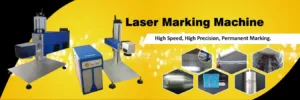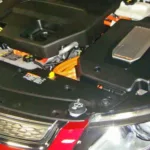Laser part marking has been seeing a steady increase in popularity for a while now. Laser part marking machines are a common find in manufacturing plants everywhere today.
The government has also contributed to the rise of laser part marking machines. They’ve done so by making stricter requirements for individual parts. This is instrumental for safety reasons on an individual and a mass scale.
Laser part marking is relatively new. This is why many plant owners have trouble buying their first machine. Not all laser part marking machines are equal and choosing the wrong one could end up costing you thousands of dollars.
There are many different types of materials and lasers involved with this technology, and the challenge of picking the right one lies in the complete understanding of both your material properties and the laser characteristics.
Some factors you’ll have to take into consideration include the speed of marking, the quality of the mark required on your product, and the type of material being marked. A good laser marking machine supplier will want to know these things before selling you any of their equipment.
Although there are other types of lasers that can be used to mark parts, solid-state pulsed lasers are your best bet when it comes to laser marking machines for metal. Of these, the most common choices include fiber lasers, Nd:YVO4, and Nd:YAG.
To make sure you can make the smartest choice possible when it comes to choosing a piece of laser marking machine engraving equipment for your plant, let’s take a look at everything you need to take into consideration before making your final choice.
Factors for Choosing a Laser Part Marking Machine
There are a few key things you want to know when it comes to picking the right laser marking machine stainless steel, such as what materials you’ll be working with, what kind of mark you need, and safety considerations you need to account for.
1. Materials
There are two main types of materials, non-organic and organic. Non-organic stuff is anything that you can’t put into a microwave. Stuff like Metal, cast aluminum, and steel all fall into this category. Organic materials are things like paper, plastic, glass, and wood.

2. Type of Mark
Once you know what kind of material you’ll be using, you next need to decide what you want your mark to look like. You might want an extra deep mark or one with a higher contrast level. You might want a frosted mark or a dark mark.
Say you were aiming for a high level of visibility for your mark, for instance. You might want to go with a frosted background and a dark mark. It all comes down to what your individual needs are, and what you want your final product to look like.

3. Safety Considerations
Depending on where you install your laser part making machine, you’ll need to adjust your safety plan. If you want to put it out on the plant floor near your operators, you’ll need more safety plans in place than if you were to keep it in an enclosed room or other dedicated space.
The power of your laser will also determine what kind of safety precautions you need to take with it. A Class I laser safety system will be needed if your laser is going to be out on an open shop floor. This will include things like warning lights, a laser-safe enclosure, and safe entryways formed by curtains.
A Class IV laser, however, would require its very own enclosed room with certain safety considerations planned for in advance. These would be things such as protective eyewear, a key switch, and area posting.
Other factors that will play into your choice of laser part marking machine include:
- Wavelength
- Mark Resolution
- Beam Quality
- Beam Steering
- Galvanometer
- Software
- Multi or Single-mode Lasers
- Gantry
- Is It a Moving or Static Part?
- How Much Access is Available to the Part?
- Remote Operations
- Are There Multiple Points of Use?

What’s the Use of Laser Part Marking Machines?
When it comes to direct part marking, laser part markers are one of the best choices. They are faster, cheaper to own, more permanent, don’t require any extra effort to solidify mark durability, and they use no consumables. Inkjet printers are typically used to mark parts, but they leave non-permanent marks and have poor mark quality and flexibility.
Chemical etching works well, but only for thin, hard materials. Dot peening can also work, but the part needs to be fixed and the mark times are very slow.
For manufacturers looking to trace the entire life cycle of their parts, direct part marking has become the new standard. The medical industry is one of the biggest consumers of this technology right now, using it to facilitate the reliable identification of individual parts of equipment in the form of data-matrix codes, barcodes, and human readable alphanumerics.
The government is also requiring more stringent tracking of parts throughout their lifecycle. The FDA published the UDI final rule in 2013, which forced the hand of many manufacturers across a variety of industries. This rule is intended to make part recalls easier and make it easier to place blame on the correct sources of malfunctioning parts.
Laser Marking Machine Working Principle – Pros and Cons
Whether you’re looking for a laser marking machine in China or searching for a laser marking machine catalogue for a new piece of equipment to put in your factory, there are both pros and cons to this technology.

While there are many more pros than cons to laser marking machine technology, the cons should not be ignored. The mains ones are the safety shielding required, and the high up-front capital cost of the marking equipment itself.
On the other hand, the pros of this technology include:
- Highest Mark Quality
- No Post Processing
- Wide Variety of Markable Materials
- High Marking Speed
- Non-contact Process
- Good Standoff Distance
- Very Flexible Mark, Can Do Data Codes, Text, and Graphics
- Simple Integration
- Dynamically Sized Marks
- Zero Mark Consumables
As you can see, the pros far outweigh the cons. Especially if you’re willing to invest in the upfront cost of a laser part marking machine, this clean and fast marking technology will rapidly displace your old equipment. Thanks to the improvements in its environmental profile, the very low cost of ownership, and flexible and easy automation, laser part marking technology is making it really hard for manufacturers to continue on using their old, outdated equipment.
There are a variety of laser marking choices you can pick from, including carbon dioxide, neodymium vanadate, ultraviolet, green, and ytterbium-doped fiber. Each of these marking systems uses the same basic design, however. The laser of the machine is steered along by mirrors which are mounted directly on the galvo motors. Each mirror uses a single axis to move along, and this process is used to create the mark.
The galvos are moved along very quickly with almost no inertia so they can create their marks at an insanely fast speed. The actual laser beam itself is projected through an F-Theta lens which puts out a focus all the way across the mark plane.
Take Everything into Account When Making Your Decision
As you can see by now, there are many different things to take into consideration when choosing your very own laser part marking machine. The laser marking machine parts you need on your machine might differ from someone else’s machine, and vice versa.
Assuming you want the best mark possible, you’ll need to account for factors like your beam quality, software, galvanometer, beam steering, multi or single-mode lasers, mark resolution, gantry, and wavelength among others.
The new, more stringent regulations on part identification combined with the increased personal need for more efficient part identification has made laser part marking machines a necessity for most manufacturing plants.
Although the initial cost of such a machine can be steep, plant owners are almost sure to recoup their losses within a short period of time. This is due to the increased level of efficiency in the part marking process, with laser part markers able to get the process done in a fraction of the time.
If you’re looking to save yourself money in the long run, while simultaneously making your production process more efficient and able to comply with government standards, buying a laser part marking machine is a no-brainer.
As long you take into account the factors we’ve discussed today, you’ll be well on your way to improving your part marking process and tightening up your entire production process across the board.








